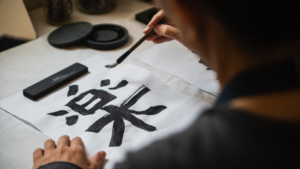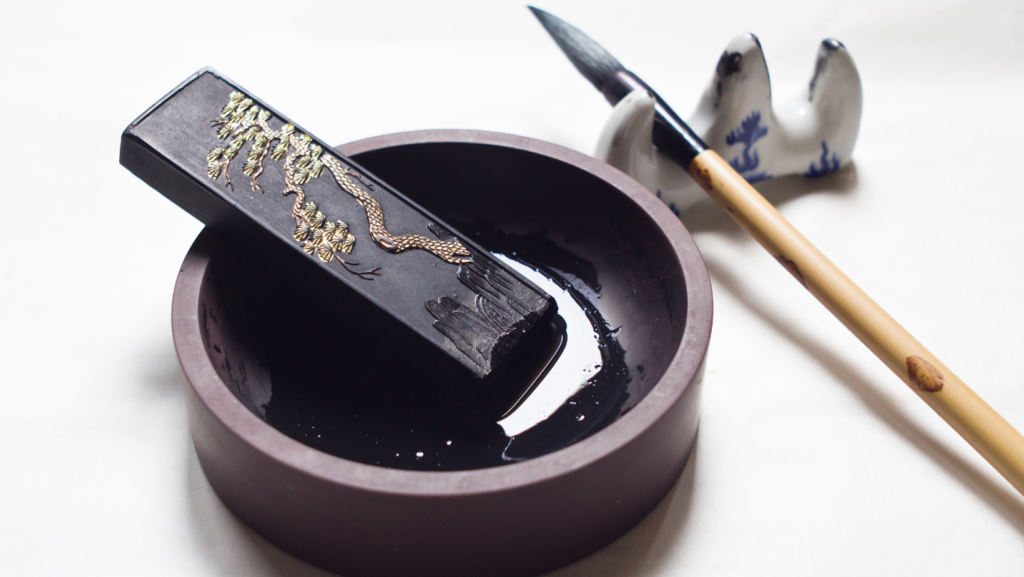Japanese ink art, known as sumi-e, is a captivating form of expression that blends simplicity with profound depth. Originating in China and flourishing in Japan during the 14th century, this art form uses black ink and delicate brushstrokes to capture the essence of its subjects. The beauty of sumi-e lies in its ability to convey complex emotions and landscapes with minimalistic techniques.
The practice of sumi-e is deeply rooted in Zen philosophy, emphasizing the importance of mindfulness and harmony with nature. Artists strive to create pieces that reflect a sense of balance and tranquility, often depicting scenes from the natural world. Through the careful application of ink and water, they achieve a range of tones and textures, creating artwork that’s both evocative and serene.
Today, Japanese ink art continues to inspire artists worldwide, transcending cultural boundaries. Its timeless appeal and meditative nature invite viewers to pause and appreciate the beauty in simplicity.
Japanese Ink Art

Japanese ink art, or sumi-e, has a rich history that traces back to the influence of Chinese ink wash painting during the Tang Dynasty (618–907 AD). Buddhist monks played a pivotal role, bringing this art form to Japan around the 14th century. Over time, Japanese ink art evolved distinctively, integrating Zen philosophy and embodying a unique aesthetic appeal.
During the Muromachi period (1336–1573), ink painting became more than a cultural import—it developed into an essential mode of artistic expression in Japan. The Zen monks, most notably Sesshū Tōyō, mastered techniques that accentuated the art’s simplicity and spiritual undertones. Sumi-e emphasized the use of black ink gradients, producing works that resonated with emotional depth and subtle beauty.
In the Edo period (1603–1868), Japanese ink art expanded its thematic repertoire. Artists began incorporating elements beyond natural landscapes, such as human figures and urban scenes, reflecting the changing dynamics of Japanese society. This era defined the art form’s diversity and its capacity for narrative storytelling.
Advancements in the Meiji period (1868–1912) marked the transition of Japanese ink art into a modern context. As Western art techniques influenced Japanese artists, they adapted sumi-e, blending traditional methods with new approaches. This evolution ensured its relevance and continued appeal on the global art stage.
Key Techniques Of Japanese Ink Art
Japanese ink art embodies techniques deeply rooted in tradition and philosophy. Key methods include sumi-e and shodo.
Sumi-e

Sumi-e, also known as ink wash painting, uses black ink to depict landscapes, flora, and fauna with simple yet expressive brushstrokes. Practitioners employ different brush pressures and ink densities to convey depth and emotion. Mastery of negative space is crucial as it represents the unseen and emphasizes the main subject. Artists often meditate before painting to align with Zen principles, allowing intuition to guide their hand.
Shodo
Shodo, the art of Japanese calligraphy, focuses on the beauty of characters written in ink. It requires discipline to control brush movement and pressure, forming strokes with both precision and fluidity. The flow of the brush reflects the rhythm and energy of the artist’s hand. Each character expresses emotion, making shodo a form of personal expression. Harmony in composition and balance between lines and spaces are essential elements in this traditional art form.
Influential Artists In Japanese Ink Art

Influential figures in Japanese ink art have shaped the tradition, impacting both past and present practices. Sesshū Tōyō, a renowned Zen monk and painter of the Muromachi period, captured expressive landscapes in sumi-e, intertwining spiritual depth with artistic precision. His travels to Ming China enriched his style, resulting in masterpieces like “Winter Landscape.”
Kano Eitoku, a prominent artist of the Azuchi-Momoyama period, expanded the decorative aspects of ink art. While his grandfather, Kano Motonobu, laid the groundwork for the Kano school, Eitoku introduced dynamic compositions and grandiose themes, influencing generations.



